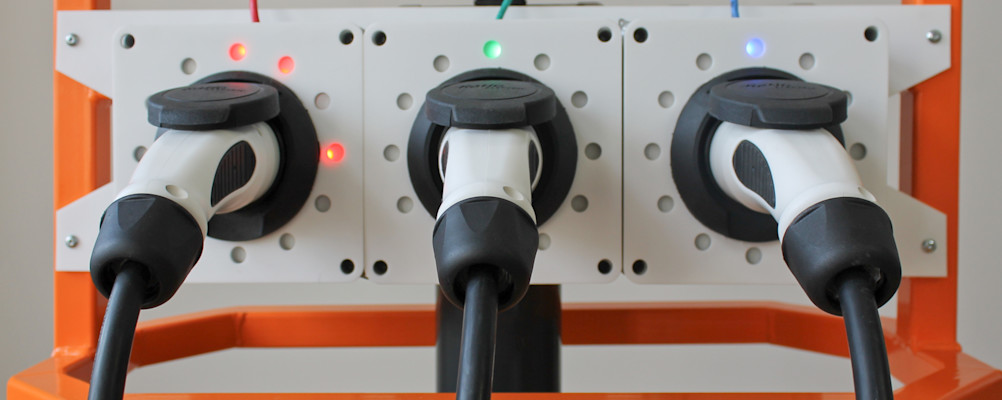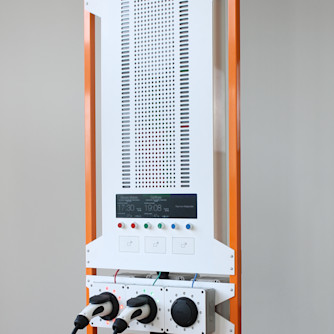Case
Transparant Charging Station
15 July 2019
Why this project?
In the future, more and more cars will run electrically. This presents new challenges because if everyone wants to charge their car at the same time, the electricity network becomes overloaded. This can be prevented with a smart charging system. Additionally, such a system can ensure that people start charging at times when as much renewable energy as possible is available. Smart charging systems use complex algorithms. They can determine exactly which car can load when and how fast. These algorithms are not transparent at the moment. This can lead to misunderstandings and frustrations among car owners. That is why Thijs Turèl came up with the Transparent Charge Post when he worked at network operator Alliander. He asked design agency The Incredible Machine to make the idea tangible and experienceable.
What does the project entail?
The Transparent Charging Station provides insight into which choices smart charging systems make. Many factors can influence who can load and when. The software that determines that will eventually become more and more complicated. Also, more and more companies will be involved. This makes the process even less transparent. Thijs Turèl: “The Charging Station is a symbol of a larger social issue. In the future, we will increasingly have to deal with smart systems in the city, where computers make decisions. We will be confronted with power issues that play a role in the digitization of the electricity network. Soon, that will be an unclear process for people, so you have to keep explaining what is happening. You have to take them with you. It must become an inclusive process. You can see the Transparent Charge Post as an emergency brake on a train: you only need it occasionally. It's only about the few cases that the regular charging station does not do what it should do. Then the process suddenly turns out to be very opaque. To whom should you turn with your complaint as a citizen?".
With our design, we look for boundaries and exceed them.
Phase one of the project resulted in an installation for museums and fairs which was primarily intended to stimulate the discussion. Visitors received a charge card with different priorities: a diplomat, a criminal, a user with privileges and someone with a "Halt" penalty. Who gets priority with loading? The personal data of all users were made visible to increase friction. Is that desirable? In phase two of the project, which is currently underway, a consortium of parties is working on a pilot with the municipality of Amsterdam as the problem owner. The aim is to explore whether the idea could work.
What is the contribution from and to the creative industry?
In phase one of the project, The Incredible Machine made clear what a possible solution is to a problem that is not yet there. Like Speculative Design: exploratory design where you speculate about the world of tomorrow to substantiate today's decisions. Marcel Schouwenaar: “We used the Reframing Method to make the future visible. You take a position, you choose a possible future and you design for it. Because an algorithm in itself does not say much, we must know what it looks like in the future world in which people live. We entered into discussions with our customers, E-Laden and Alliander to start with. In this way, we can determine which factors matter. For example, is discrimination taking place? We opted for an optimistic future with a dark edge. We wanted people to start thinking about our design: do I want this? We did this by looking for and crossing boundaries. For example, by making all personal data visible. Because then people start thinking: where is the limit and what is acceptable? In this way, we explore what is ethical and we can continue from there."
And what now?
A third phase will follow in which the project will be rolled out further. This depends on the outcome of the pilot in Amsterdam. Thijs Turèl: “As far as I am concerned, it could in time be included in tender conditions that charging stations must contain a certain degree of transparency. Now there are starting points because we have shown how that could be done."



